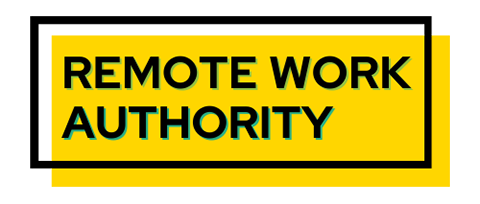Employees with a low level of commitment to their jobs cost companies in lost productivity, quality and service, absenteeism, low morale, and lower organizational success. Disengaged employees threaten company culture. The best ways to re-engage people include listening to their needs and offering flexibility.
When businesses hire new employees, they hope for not just skill and good work habits but also someone who will engage with the company and their job. Statistics show that engaged employees are more productive, among other things. Especially since the trauma of COVID and its disruption of traditional working patterns, companies are finding it harder to keep employees engaged.
Gallup polls have indicated that engagement dropped by 4% between 2020 and 2022. Those who work remotely are more engaged (37%) than those who work exclusively on-site (29%.) As a result, discussions of engagement pop up in most discussions of the pros and cons of remote work.
Disengagement costs money, according to a recent survey by McKinsey. A mid-size S&P 500 company can lose millions yearly or over a billion over five years. Smaller companies still take a big hit. The results include:
- Decreased productivity
- Negative customer experiences
- Lower morale
- Absenteeism
- Lower organizational success

Table of Contents
What Is Employee Engagement?
Fortune defines employee engagement as the “strength of the mental and emotional connection employees feel toward the work they do, their teams, and their organization.” Those who are engaged feel positive about the work they do, like working with their teammates, and are proud to be part of the company.
Engagement, as defined by Fortune’s Quantum Workplace, is not the same as employee happiness, satisfaction, or well-being – though a good employer is concerned about those things. Happiness can be short-term, but satisfaction is a surface emotion that does not indicate commitment to the company. Well-being is personal but doesn’t describe the employee’s connection to the company. Engagement suggests personal investment in the company and a willingness to go the extra mile to ensure the company’s success.
What Are The Levels Of Engagement?
Employees should care about their company. The question is, “How much?”
Fortune enumerates four levels of engagement.
- Highly engaged employees think favorably about the company, their teams, and their jobs. They see themselves as long-term “brand advocates” for the company; their commitment shows in their willingness to put in extra effort and encourage other employees to do the same.
- Moderately engaged employees like their company but see ways for improvement. These attitudes encourage them to ask for more responsibilities, but they may underperform with them. Something is holding them back from total engagement.
- Barely engaged employees are indifferent about their jobs and the company, unmotivated, and do the minimum work. They are clock watchers who may waste time, look for other jobs, and are at high risk for turnover. They are also called “quiet quitters” these days.

- Disengaged employees feel negatively about the company and their position. They can be a disruptive force that brings other employees down.
Recognizing Disengaged Employees
McKinsey broke this disengagement down even further by rating them on a satisfaction spectrum.
- Thriving stars (4%) are self-driven and autonomous workers who often like remote work because it positively impacts their motivation, productivity, and work-life balance. They like fully remote or hybrid positions so much they may look for another job that offers the flexibility they want and need.
- Reliable and committed (38%) workers prefer hybrid work to fully remote work as these options offer a better balance between connection and productivity. People come in but resent the strain on their work-life balance, so they are less motivated.
- Double dippers (5%) are those with multiple jobs who need flexibility to allow them to balance their responsibilities. They might be engaged or unengaged in a particular job, but going to the office is a strain.
- Mildly disengaged (32%) workers dislike the micromanagement that takes place in the office as they value flexibility and autonomy. Having to go to the office makes some more disengaged.
- Disruptors (11%) actively and vocally oppose RTO mandates, which they regard as an unnecessary hassle that infringes on their autonomy. Coming back to the office makes them more disengaged, and they are likely to quit.

Quitters (10%) are high-performing employees who feel disengaged and undervalued. When they lose the ability to work remotely, they will likely find better opportunities elsewhere. Some of these workers may have left eventually, but RTO mandates hasten their departure.
Promoting Engagement Through Flexibility
Companies encourage engagement in three ways: adequate compensation, meaningful work, and flexibility in the workplace.
What the pandemic showed was the importance of flexibility in making workers more engaged. Some employees value flexibility more highly than others, often because their personal circumstances call for it. Parents, caregivers, and those with disabilities may be able to deliver vast quantities of excellent work so long as they have discretion over when they perform the job. Other workers highly value autonomy and hate micromanagement. When companies began to issue RTO mandates, how engaged employees were with the company determined their reaction to the policy.
McKinsey came to some eye-opening conclusions from their research.
Offering more flexibility can turn almost any disengaged employee into a thriving star. Why? Companies who try to enforce RTO mandates with little consideration for employee needs and preferences increase disengagement among the workforce. Those who showed trust while ensuring accountability are often rewarded with improved performance. This proved true for all levels of engagement.
Complementary research by Promoleaf recognizes that remote work for everyone is not the panacea that will guarantee top engagement from all employees. Their statistics are compelling.
Keeping employees engaged requires the company to develop plans to increase employee engagement. Any plans start with listening to employees to see what is important to them. Even companies that think they know what employees need and want can be surprised when they get the results of anonymous surveys sent out to the workforce. In addition to flexibility, they may want mechanisms put in place to encourage interaction, offer feedback on their work, recognize their accomplishments, and make mental health services available to allow them to become better workers.

A Comprehensive Plan To Prevent Worker Disengagement
Quantum Workplace provides a list of companies that increase engagement among their workforce that makes it clear how plans for employee engagement will meet corporate goals while pointing out a clear path of success for them.
- Prioritize company culture.
- Inspire employees through mission, vision, and values.
- Develop and equip your managers as coaches.
- Build great communication habits.
- Create a robust feedback culture.
- Share employee feedback and always follow up.
- Paint a clear picture of success at organization, team, and employee levels.
- Recognize employees for their contributions.
- Provide access to employee development opportunities.
- Prioritize flexibility and employee wellbeing.
- Invest in technology that helps you do all of the above!


